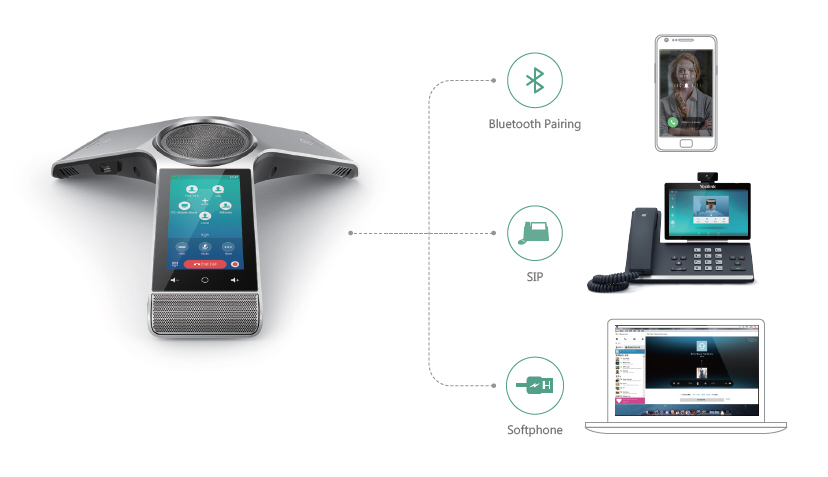Introduction
In an era where technology is evolving at a breakneck pace, voice technology has emerged as a pivotal force in reshaping communication paradigms. The rise of Voice over Internet Protocol (VoIP) phone systems has revolutionized how businesses and individuals connect. As we navigate through 2023 and beyond, understanding the future trends in voice technology and their impact on VoIP becomes critical for organizations aiming to leverage these advancements for enhanced communication efficiency.
This article delves deep into the intricate relationship between voice technology and VoIP systems, exploring emerging trends that are set to redefine the landscape of communication. From Artificial Intelligence (AI) integration to advancements in natural language processing, this comprehensive guide will illuminate the future trajectory of voice technology and its profound implications on VoIP.
Understanding VoIP Phone Systems
What Are VoIP Phone Systems?
Voice over Internet Protocol (VoIP) phone systems allow users to make voice calls using the internet instead of traditional telephone lines. By converting analog audio signals into digital data packets, VoIP enables seamless communication over various networks, offering significant advantages such as cost savings and increased flexibility.

How Do VoIP Systems Work?
VoIP systems operate by utilizing several key components:
Voice Data Transmission: Analog audio is digitized and compressed for transmission over the internet. Codecs: These are algorithms that encode and decode audio data, ensuring high-quality sound during calls. Internet Connection: A stable internet connection is essential for transmitting data without interruptions. VoIP Service Provider: Providers facilitate the connection between users, often offering additional features like voicemail, call forwarding, and conferencing.Benefits of Using VoIP Phone Systems
- Cost Efficiency: Lower long-distance call rates compared to traditional phone services. Scalability: Easily add or remove lines based on business needs. Enhanced Features: Access to advanced functionalities like video conferencing and instant messaging.
Future Trends in Voice Technology and Their Impact on VoIP
The Rise of AI-Powered Voice Assistants
Artificial Intelligence has significantly influenced voice technology, particularly with the advent of intelligent voice assistants like Amazon's Alexa, Google Assistant, and Apple's Siri. These tools utilize natural language processing (NLP) to understand user queries better and provide accurate responses.
Implications for VoIP Systems
As more businesses adopt AI-driven solutions, integrating these capabilities into VoIP phone systems can lead to enhanced customer experiences through automated responses and streamlined operations.
Natural Language Processing Advances
Natural Language Processing continues to evolve rapidly. Enhanced NLP allows for more accurate speech recognition and understanding context within conversations.

Impact on Communication Efficiency
With improved NLP capabilities integrated into VoIP systems, businesses can expect fewer misunderstandings during calls, leading to higher productivity levels.
Integration of Machine Learning in Voice Technology
Machine Learning Algorithms Explained
Machine learning involves training computer algorithms to recognize patterns within data sets. In voice technology, machine learning can analyze vast amounts of audio data to identify trends in user behavior or preferences.
Transforming Customer Interactions with Voice Technology
By leveraging machine learning insights within VoIP systems, organizations can personalize communication strategies based on consumer preferences, resulting in improved customer satisfaction.
Predictive Analytics in Voice Communication
Predictive analytics powered by machine learning can anticipate customer needs before they arise. This capability can enhance proactive customer service efforts within a VoIP framework.
Emergence of 5G Networks and Its Influence on Voice Technology
Understanding 5G Technology
5G represents the fifth generation of mobile networks designed to deliver faster speeds, lower latency, and increased connectivity across devices.
Enhancing VoIP Functionality with 5G
The introduction of 5G networks enables smoother real-time communications via VoIP due to reduced latency issues. This advancement facilitates crystal-clear conversations even during peak usage times.
Future Use Cases for 5G in VoIP Systems
With 5G's rapid deployment globally, businesses may witness innovative use cases such as virtual reality meetings or immersive telepresence experiences via their existing VoIP platforms.
Voice Biometrics: Securing Communications with Authentication Technologies
What Is Voice Biometrics?
Voice biometrics refers to the use of an individual's unique vocal characteristics for authentication purposes. This technology offers a secure alternative to traditional password systems.
Implementing Voice Biometrics in VoIP Phone Systems
Integrating voice biometrics into VoIP systems could improve security measures by ensuring that only authorized users access sensitive information during calls.
The Role of IoT Devices in Enhancing Voice Communications
Understanding IoT Integration with Voice Technology
The Internet of Things (IoT) connects everyday devices to the internet, allowing them to communicate with each other seamlessly. This integration opens new avenues for enhancing voice communications through connected devices.
Enhancements Offered by IoT-Integrated VoIP Solutions
IoT-enabled devices could streamline workflows by automating tasks such as scheduling meetings or managing conference room availability directly through voice commands via a dedicated VoIP system interface.
Voice Search Optimization Trends Affecting Businesses Using VoIP Systems
What Is Voice Search Optimization?
As more consumers turn towards voice search technologies for finding http://gunnerlech921.cavandoragh.org/choosing-between-residential-and-business-voip-solutions services or products online, businesses must adapt their SEO strategies accordingly.
Optimizing Business Communication Channels
Organizations deploying VoIP phone systems should consider optimizing their services for voice searches—making it easier for customers seeking assistance via spoken queries rather than typed ones.
FAQs
What are the main benefits of adopting a modern VoIP phone system?
Modern VoIP phone systems offer numerous benefits including cost savings on long-distance calls, enhanced features like video conferencing capabilities, scalability options tailored specifically for business growth as well as improved call quality due largely from advancements made in underlying technologies like AI/NLP integration among others!
How does AI impact customer service within a business using a VOiP system?
AI enhances customer service efforts by automating responses through intelligent virtual assistants capable of handling routine inquiries efficiently while allowing human agents focus more complex issues requiring personal touch!
Are there any security concerns associated with using VOiP?
While VOiP provides numerous advantages such as flexibility & cost-effectiveness; potential security threats do exist including hacking attempts which necessitate proper encryption protocols being implemented alongside regular software updates ensuring protection against vulnerabilities!
Will implementing machine learning require extensive changes within existing VOiP infrastructure?
Not necessarily! Many VOiP providers have already begun integrating machine learning capabilities into their platforms thus making it easier than ever before businesses leverage these innovations without needing major infrastructure overhaul!
How will predictive analytics change how companies interact with customers using VOiP solutions?
Predictive analytics allows organizations predict customer behavior enabling personalized interactions improving overall satisfaction rates thereby creating stronger relationships built around trust & reliability!
What does future hold regarding advancements in VOiP technologies?
As technological developments continue accelerating trends such as further integration AI/NLP technologies along with growth adoption connected IOT devices shaping landscapes communications likely paving way seamless interactions enhanced experiences consumers alike!
Conclusion
In summary, navigating through the dynamic landscape shaped by future trends in voice technology reveals profound implications for organizations utilizing VoIP phone systems worldwide! With enhancements brought forth from Artificial Intelligence integration alongside advances made possible through Natural Language Processing coupled emerging opportunities presented via 5G networks; companies stand poised capitalize upon these innovations ultimately driving efficiencies while fostering stronger connections both internally externally alike! Embracing these future trends will not only optimize communication channels but also position organizations favorably amidst competitive landscapes established today!
In conclusion—the future trends in voice technology unequivocally herald exciting times ahead shaping how we communicate unlocking new potentials previously thought unattainable transforming our interactions fundamentally paving path towards greater possibilities!